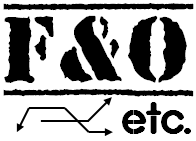|
|
In our previous series, we had covered Trading Long Call Option. In this series, we will cover the details of Trading Short Call Option. First of all, let's begin with unerstanding the meaning of "SHORT CALL Option".
As explained in our previous article Long Short Options Terminology, when you SHORT an option, it means you are SELLING an option (not the underlying stock or index). Hence, you receive money from that.
Short Call Option Payoff Function
Here is the Payoff Function for Short Call Option.
To understand this with an example: First look at the PINK colored graph - that is the basic payoff function for Short Call Option without considering the price or premium of the call option. So, let's say Microsoft stock (not the microsoft option) is currently trading at $30 per share. You are of the opinion that in 2 months time, the microsoft share price will come down to $25 or below. So you have a BEARISH view on Microsoft and that makes a perfect case for taking a SHORT CALL position on Microsoft.
So what you do is SHORT (or sell) Microsoft call option with a strike price of $30 and from this sale you receive $5. Hence, as shown in the payoff function above, The PINK colored graph then shifts upwards by $5 - the RED colored payoff function. What this tells you is that if the microsoft stock remains below the strike price of $30 on the expiry day, then you will keep the entire $5 you got from the sale of Microsoft call option - as indicated by the horizontal flat line of the RED graph. However, If the price of microsoft on the expiry day is higher then the strike price of $30, then your profits will start coming down in a linear fashion - as indicated by the 2nd part of the slanting RED graph.
So for e.g., if the price ends at $31, then you make $4 as profit. How? Since the strike price is $30, and the stock price is ending at $31, you will be required to pay the buyer of the option $1 ($31- $30). However, from the selling of option, you received $5 in the beginning. SO your net profit if $5 - $1 = $4.
Breakeven point for Short Call Option
Breakeven point is basically the no profit no loss situation. In the payoff function graph, it is the point at which the payoff function (RED graph) crosses the horizontal (x-axis). For the above example, since you are selling a $30 strike price call, and getting $5 from the sale of that, your payoff function shifts upwards by $5, as indicated by the RED graph. This RED graph crosses the x-axis at $35, hence that become your breakeven point for this trade. i.e. if the stock price of microsoft ends at $35 on the expiry day, you make no profit no loss i.e. you break even. However, please note that you still have to bear the cost of brokerage on both the legs (sell & buy). The reason is that first leg when you sell this option, you will have to pay brokerage. On the expiry date, since the underlying price ($35) is higher than the strike price of ($30), the option will get exercised by the buyer and you might have to pay brokerage for the option getting exercised. Although on exercise, you will give back $5 to the buyer which you got while selling the call option, but the brokerage might be charged on both the legs so that will result in net loss for you. Hence, be careful about these charges which might result in a net loss.Short Call Option: Limited Profit, Unlimited Loss Potential
Be very careful when you Short a call. Why? Because the loss can be unlimited. On the profit side, the profit is limited. See the flat horizontal line of RED graph - you profit is capped to $5. It can never go above that. Also note that you need to pay brokerage of that. So deduct the brokerage from $5 and your profit comes down further.But how about the losses? Losses in a short call position can be unlimited. See the RED graph (slanting portion) which is above $35. Suppose that the stock price of Microsoft starts to move up and reaches $70 on the expiry date. The option will get exercised by the buyer and you will be required to pay the difference between the stock price ($70) and the strike price ($30). Hence, you will pay $40 to the buyer. But you received $5 upfront while selling the call. So, the net loss to you will be $40 - $5 = $35. (Also deduct the brokerage charged by your options broker for exercising the call option). But what if the stock price of microsoft goes further to $100? You will be required to pay $100 - $30 = $70 to the buyer.
So you can see that as the price of the underlying continues to increase, your losses continue to increase as well. Hence, Limted Profit ($5), Unlimited Loss Potential in a Short Call option.
Related: Video Tutorial- Short Call Option Trading Explained
The big question is - if there is limited profit and unlimited loss in short call option trading, why do people take such a short call option position? Head on to the next article, Is short call option good to trade on?

0 Comments: Post your Comments
Wish you all profitable derivatives trading and investing activities with safety! = = Post a Comment